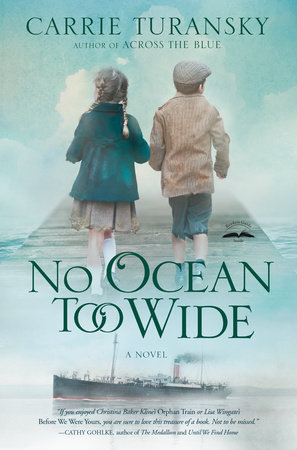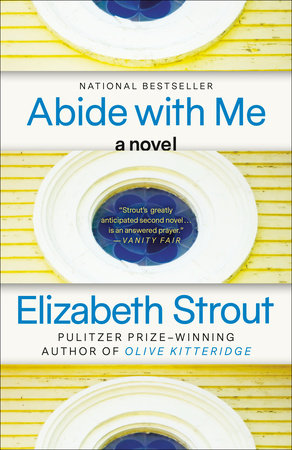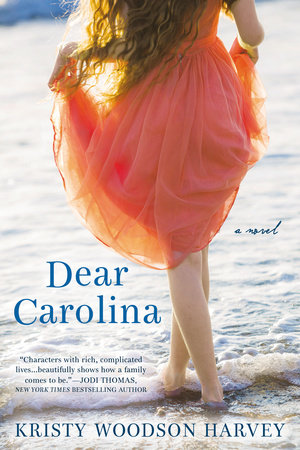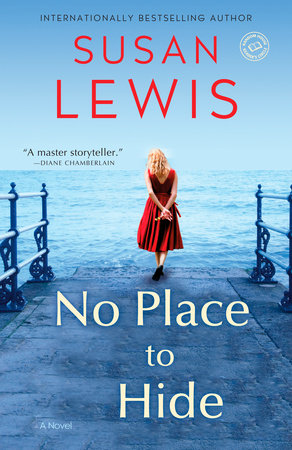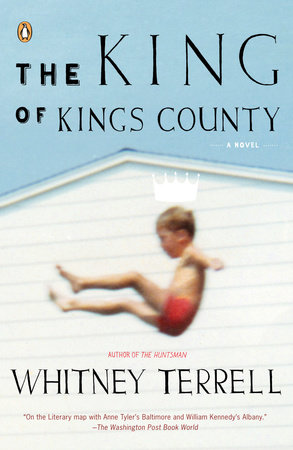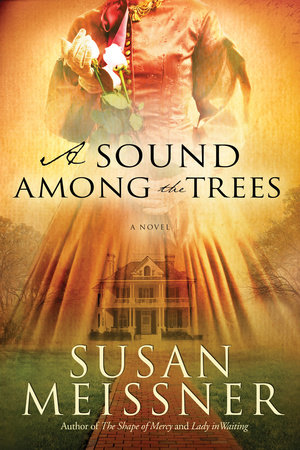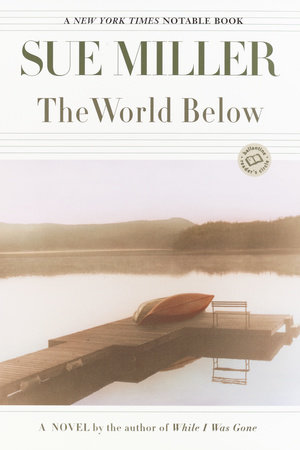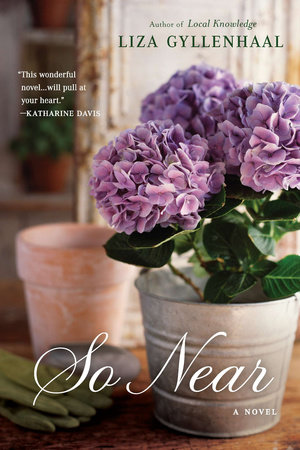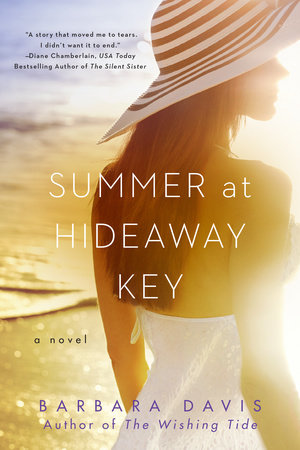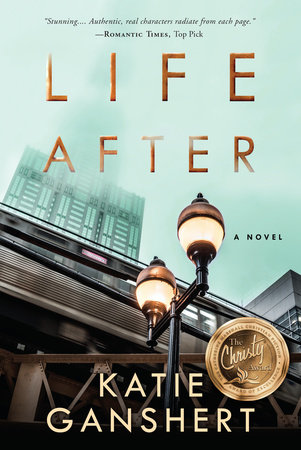Author Q&A
A CONVERSATION WITH SUE MILLER
Jennifer Morgan Gray is a writer and editor who lives in North Bethesda, Maryland.
Jennifer Morgan Gray: Was there a particular character, image, or idea that inspired Lost in the Forest?
Sue Miller: There were multiple sources of inspiration for Lost in the Forest. I had written a short story some years ago about Mark and Eva, a short story I never published, as it seemed somehow incomplete in my own mind. It focused on Mark and his dream of getting Eva back after the death of her second husband. It ended with the scene in the book when Theo suddenly remembers his father’s death, remembers him as flying at that moment, and Mark realizes from Eva’s response to Theo that his hopes are utterly futile. Sometime after this, I was talking to the father of some kids I’d known from day care, asking him what had become of them, now twenty-five years later. And in thinking about those kids, and my own son, now an adult in his thirties, I began to ponder the way we were so absorbed in ourselves, we parents-who-divorced and were busy leading our own chaotic lives. I began to think about how our children might have been affected by all that. I began to think about my story about Mark and Eva, and how there might be reverberations in their kids’ lives in response to all the events that also disturbed them so much. And in thinking about all this, and pondering how to make a longer tale out of my short story, I reread What Maisie Knew, Henry James’s short novel about a child of divorce, of callous, fortune-hunting parents in Europe, and the way they expose their daughter to life through their carelessness about her. I thought about how interesting it would be to transpose this to the late twentieth century, to parents who think of themselves as conscientious, who know a great deal about child-rearing, and who still expose at least one of their children to difficulty.
JMG: The book’s point of view shifts between Daisy, Mark, and Eva. Why did you choose to have these different voices as the driving forces of the narrative? Did you ever consider structuring the book in a different way, and if so, how?
SM: I started with Mark because that’s how my story started, though I knew it would come around slowly to focusing on Daisy. I felt I needed Eva’s perspective, too, to explain fully how Daisy became invisible to her parents, in a certain sense. I wanted the trajectory of the book to be unpredictable, surprising, in the same way that the experience was unpredictable and surprising to Mark. I wanted it to echo the way he woke up from his own story and became aware that he was involved involuntarily and unconsciously in another story–Daisy’s.
JMG: Daisy mentions a feeling of being “lost in the forest,” like the heroine of one of the fairy tales her family spins for Theo. What other meanings of “lost in the forest” did you hope to evoke? Were there other titles that you considered and then abandoned?
SM: Even the title of the short story was “Lost in the Forest,” and in the short story, Daisy is a minor character. I thought of the title as applying fully to Mark, then, well before it applied to Daisy. In fact, I think it applies to all the characters. I think it’s an apt metaphor for life, for the sense of lostness we all have periodically in life, the sense of wishing for someone else, some event, some person, some religious impulse, as in Eva’s case, to help give our lives meaning. I never considered another title.
JMG: Fairy tales–from those told at Eva’s kitchen table to Daisy’s notion of her father as “rescuer”–are motifs that weave beautifully throughout the book. While you were writing, did you envision Daisy as the heroine in a fable or fairy tale? Did you read particular fairy tales while you were working on Lost in the Forest?
SM: I reread some of the Grimms’ fairy tales, particularly Hansel and Gretel, as that one is in many ways like the fairy tale that the family tells Theo. And I did, very much, think of Daisy as being a character in such a tale; though as I indicated above, I also thought of Mark in that way, too, his forest perhaps being the illusions he has about Eva, the notion that if only he can win her back, he will live happily ever after.
JMG: Eva thinks, “She wants life. More. More of something. She doesn’t know what” (p. 73). How does this yearning inform Eva’s actions after John’s death? How does such a yearning also influence the novel’s other key characters, including Gracie, Daisy, Emily, and Mark?
SM: Certainly Eva is desperately lonely after John’s death, and her willingness to use Mark as a source of comfort in this period is part of what confuses him about his possibilities. Indeed, she momentarily considers some kind of relationship with him, but pretty quickly dismisses the possibility. But I think of this yearning as also more inchoate in Eva, and as connected to the kinds of yearning Mark has, and Daisy, too–to be rescued, to be made happy by some event, some arrival in her life. So in a certain sense, I think of this state of yearning as part of the lostness of the book’s title, and of all the characters.
JMG: What about Duncan intrigues Daisy? What other attributes does he possess that might be attractive to her, and how does he repel her? In turn, what does Daisy represent to Duncan?
SM: Daisy is initially drawn to Duncan simply because he pays attention to her–momentarily, he actually reminds her of her stepfather, John. He also lets her feel, for the first time, her sexuality, her attractiveness, which none of the other adults in her life have noticed, or let her know they’ve noticed. In addition, he doesn’t have a story, as Daisy notes. She needn’t feel much for or about Duncan–he’s a kind of tabula rasa, a fantasy figure. For a while. It’s when she starts understanding that of course he does have a story, even if he hasn’t shared it with her, that she begins to be repelled by him. What Daisy represents to Duncan is more mysterious. It’s never clear in the book what’s driving him, and I didn’t feel I needed to make that clear. She is, of course, lovely, and he sees that–and perhaps understands that no one else yet has. He catches her in a moment of perversity–stealing from her mother– and her response to his catching her is defiant and brave, in a way. These qualities in her interest him, clearly. Why they result in his seducing her is something I didn’t think I needed to explore. Or I thought that exploring it would take me too far from my main characters.
JMG: Teenage Daisy is compelled by the writers Emily Dickinson and Sylvia Plath. What about these two authors resonates with her? Were there any authors who spoke to you in a similar way when you were Daisy’s age?
SM: Certainly Plath’s rage, particularly her rage at her father for dying, the sense of herself as in pain, and the intensity of her poetry–all these would echo Daisy’s own sense of herself and her world. I think with Dickinson, it’s clearly the use of language that intrigues and delights Daisy, the surprising way she expresses things Daisy has perhaps thought about but not had words for. For myself at that age, there were fewer direct connections with writers I was taught–I remember reading Melville in high school with not much sense of recognition. But I read Jane Eyre on my own, over and over, actually, thrilled at the sense of a slow making of a self out of unlikely materials, and at Jane’s triumph over all adversity.
JMG: Daisy believes she is “collateral damage” in her parents’ relationship (p. 243). Do you think that her assessment is correct? Do Theo and Emily avoid feeling similarly in their places within the family structure? If so, how?
SM: I wanted to have Daisy be uniquely vulnerable to the events in her family’s life. Her shyness, her unattractiveness at the moment of the story, her greater vulnerability to her parents’ divorce and the birth of Theo, her greater devastation at John’s death–all these mean that she is very fragile, very in need at exactly the moment when her parents, too, are most fragile and in need. I think Theo and Emily do avoid similar feelings, though they certainly have complicated reactions, too, to family events. Theo’s denial of his father’s death, his hoarding money–these might be interesting to a child psychiatrist investigating his grief. And Emily’s sexuality, her perhaps too ready turn to support from the outside world, may not be as healthy a pair of responses as they seem. But each of them does, truly, have resources that Daisy doesn’t, and they suffer less because of this.
JMG: Smatterings of the adult Daisy are sprinkled throughout the book, particularly in her references to Dr. Gerard. What made you decide to imbue some of Daisy’s narrative voice with the knowledge of how things turn out? Why do you allow a decade to elapse between the second-to-last and the final chapter of the novel?
SM: I think my impulse was to answer the question of how this affected Daisy, how she thought of it later, during the experience, so that the reader wouldn’t bring to those passages in the book the standard, the expected responses; but would already be having to think about this experience exactly as it affected just this one character–Daisy. The decade’s lapse had to do with my sense that the step-by-step rapprochement between Mark and Daisy, the step-by-step emergence of Daisy as a resourceful adult, could both be largely implicit in how she “turns out,” as it were. Or turns out for this moment, anyway. And with my own fascination with how people do turn out, as seen years later.
JMG: By the end of the book, do you think Daisy–and her family–have truly entered a “brave new world” as Miranda says in Shakespeare’s play, The Tempest? Why or why not?
SM: It seems to me that Miranda’s cry has to do with her own newness in the world, her innocent amazement at it, rather than at some quality the world itself has. What I wanted to signal was that Daisy had somehow retained some sense of that innocence in spite of the experience she has with Duncan, which some would assume would have been damaging to that sense. And I think it could be said of the others–Mark and Eva–that they, too, have emerged from the part of their lives I record with a sense of hopefulness in one way or another.
JMG: Do you have any special routines or rituals you adhere to while you’re writing that help to bring inspiration and creativity? What are they?
SM: I try to write regularly when I’m working on a book, and I write in longhand for the first draft. There’s something very provisional about this that’s helpful to me–I feel, I think, that it doesn’t have to be the final version, or even close to it. I can just try. And I often turn to certain prose stylists very different from myself for a kind of inspiration, for a sense of what’s excitingly possible in writing. It isn’t that I could ever write as they do, or even want to, but simply that their writing thrills me. The Children’s Bach, by Helen Garner; McKay’s Bees, by Thomas McMahon; A High Wind in Jamaica, by Richard Hughes; The Republic of Love, by Carol Shields; Open Secrets, by Alice Munro–any of these can make me feel eager to begin.
JMG: Is there anything in particular that you’re working on right now? What can your readers look forward to seeing from you next?
SM: I’m writing another novel, due in to my publishers in the fall of 2006. Its working title is A Private Life.



